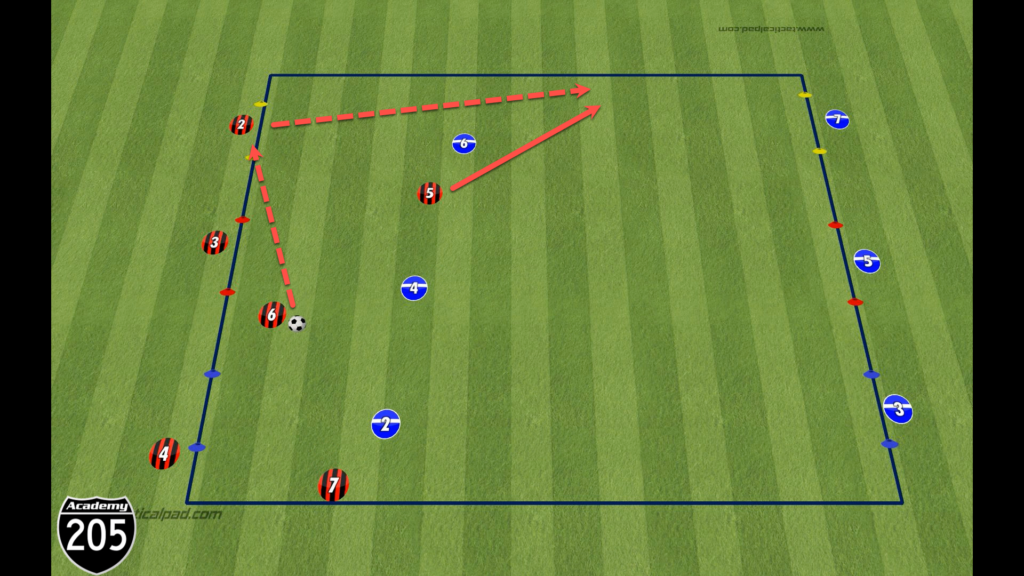3v3 flying changes cone goals
Video
Description
The game starts with two teams of 3 facing each other, with at least one player behind each of the first groups of players. The activity begins with a pass across to the opposing team of 3 – both teams enter the grid. Each team tries to play the ball through the opposing line to one of the three cone goals where an opponent is waiting.
If the pass is completed, the defending team of 3 leaves the field, and a new team of 3 immediately enters, trying to pass through their opponents to the waiting players at the cone goals.
If the defending team gains possession, the roles are switched, and the team on the ball tries to complete their pass through the opponents to continue the game.
Initially, there are no restrictions on the number of passes a team may take before completing a through pass.
If the ball goes out of play, the team that lost the ball leaves the field, and a new team enters with the ball, with the remaining team taking the defending role.
Scoring
Progressions/Adjustments
Limit the number of touches per player before they must pass
Limit the number of passes in possession before a team must successfully pass to a cone goal
Allow one (or more) back passes to a teammate as part of the buildup to score

What we like about this game
Relationship to the game

Coaching points
As noted above, there are various possible coaching points based on the moments of the game (in/out of possession and positive/negative transition). The coach utilizing this activity may want to consider identifying a specific game model topic (for example, breaking defensive lines) rather than trying to respond in real-time to every error through stoppages.
Key points in possession
- The first option on receiving the ball at a cone goal to start possession or on winning the ball from the opponents in the grid is – if possible – break lines and get a ball to the opposite cone goal


- For the 2nd (or 3rd) attacker, continually scan to find positions on the field to receive the ball

- Recognize pressure on the 1st attacker and be prepared to drop to support
- Be willing to play the ball backward to advance the ball if forward options are closed off

- If possible, maintain an open body shape to play a ball through lines quickly.
- Use your body to shield in possession and ensure that 1st touch is under control
- Be creative in using on-ball feints to create windows to pass through to target cones.
- If you make a penetrating run (for example, in a 1-2 situation) and you do not receive the ball, recycle the run – don’t stop
Key points out of possession
- As soon as the ball is played to the opposite cone goal and a new team enters, the nearest player must try to quickly engage, close off options, and get the opponent’s attention on the ball rather than having time and space to scan the field

- The 2nd and 3rd defenders will take the pressure/cover roles based on the ball position and movement, recognizing the presence of the other two attacking players

- As soon as the ball is played to the opposite cone goal and a new team enters, the nearest player must try to quickly engage, close off options, and get the opponent’s attention on the ball rather than having time and space to scan the field
- The 2nd and 3rd defenders will take the pressure/cover roles based on the ball position and movement, recognizing the presence of the other two attacking players
- Defenders should be continually scanning and aware of the threats of through balls
- Communication (verbal and non-verbal) between the defenders to identify roles and threats as the ball moves between opponents is a key coaching point
Adjust for numbers
